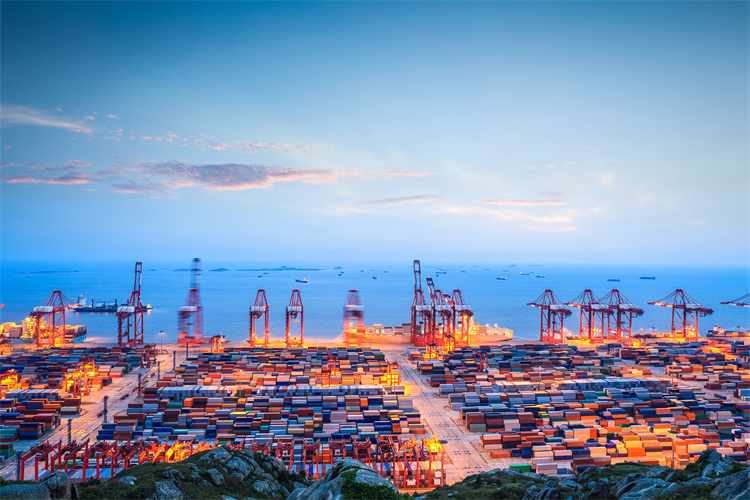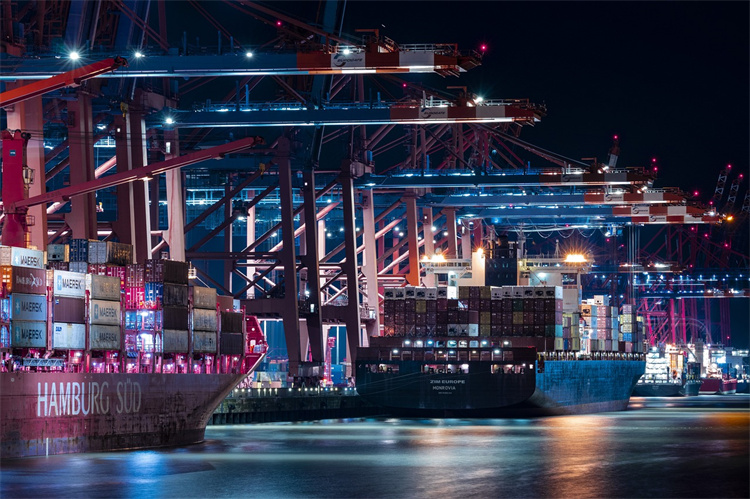Supply Chain Resilience Strategies for 2025

Supply chain resilience has become a critical focus for businesses in 2025. Recent global events, such as pandemics and geopolitical tensions, have exposed vulnerabilities. For instance, only 2% of companies were fully prepared for the pandemic, while 57% faced serious disruptions. These challenges highlight the need for robust supply chain management to mitigate risks and ensure continuity.
Technological advancements are transforming supply chains into agile networks. Artificial intelligence now plays a vital role in managing supply chain disruptions, while sustainability has emerged as a priority for consumers and governments. Companies must adopt innovative strategies to navigate these complexities and enhance their resilience in an unpredictable global market.
Key Takeaways
Strong supply chains help businesses handle problems and keep running. Work on being flexible to face tough situations.
Using many suppliers lowers risks and boosts competition. Check your suppliers and find new ones to make your supply chain stronger.
Using tools like AI and IoT makes work easier and faster. Look at live data to spot problems early and work better.
What Is Supply Chain Resilience and Why Does It Matter?
Defining Supply Chain Resilience
Supply chain resilience refers to the ability of a supply chain to withstand and recover from disruptions while maintaining essential operations. It ensures that businesses can adapt to challenges like geopolitical instability, natural disasters, or technological changes. Industry experts define it as more than just recovery; it is about minimizing the impact of disruptions on costs, revenues, and customer satisfaction.
Source | Definition |
|---|---|
GEP | Resilience in the supply chain is the capability of a supply chain and, by extension, the enterprise, to weather disruptions and reduce the impact of such disturbances on its costs, bottom line, and customers. |
NetSuite | Supply chain resilience is a measure of how well a supply chain can withstand and recover from disruptions and breakdowns, regardless of whether the challenges are predictable or unexpected. |
By focusing on resilience, you can transform your supply chain into a competitive advantage, enabling swift responses to market changes.
The Business Impact of Resilient Supply Chains
A resilient supply chain protects your business from financial losses and reputational damage. It allows you to identify risks early and minimize their impact without disrupting operations. For example, companies like Amazon demonstrated resilience during the COVID-19 pandemic by adapting their supply chains quickly. This flexibility helped them maintain customer trust and gain market share.
Resilient supply chains also create contingencies that balance operational costs with potential revenue losses. This approach ensures continuity and positions your business to seize opportunities during disruptions, enhancing customer retention and overall reputation.
Key Benefits of Building Resilience
Building supply chain resilience offers several benefits:
It ensures operational continuity during disruptions.
It reduces risks associated with material shortages or geopolitical instability.
It enhances customer satisfaction by maintaining reliable deliveries.
It supports long-term sustainability by integrating eco-friendly practices.
By investing in resilience, you prepare your business for future challenges while aligning with consumer demand for sustainable practices. This proactive approach not only safeguards your operations but also strengthens your brand image.
Key Challenges Facing Supply Chains in 2025
Global Disruptions and Geopolitical Risks
Global disruptions and geopolitical risks continue to challenge supply chain resilience. Political changes across Europe may destabilize economies, while climate change disrupts transportation routes and damages infrastructure. Geopolitical instability, such as the Red Sea crisis, threatens trade routes and regional stability. Tensions in energy-rich regions, including Saudi-Iranian conflicts and the Russia-Ukraine war, pose risks to global oil and gas supplies. Rising nationalism and protectionist trade policies further complicate global business strategies.
To prepare for these risks, you should conduct regular risk assessments focusing on political stability and economic policies in key markets. Multi-sourcing strategies can diversify suppliers and reduce dependence on single sources. Leveraging AI for predictive analytics helps anticipate supply chain disruptions, enabling proactive responses.
Supply Chain Complexity and Interdependencies
Modern supply chains are increasingly complex and interconnected. Limited visibility into third-party operations and dependencies on external entities amplify risks. Outsourcing often transfers risks, while regulatory and compliance challenges add further complications. Tracking tier 2 and tier 3 suppliers remains difficult, and the high volume of data can lead to inaccurate forecasts.
You can address these challenges by conducting comprehensive risk assessments across your supply chain network. Collaborating with external partners and leveraging technology for real-time monitoring enhances visibility. Establishing alternate sourcing strategies and maintaining inventory buffers ensures flexibility during disruptions. These steps help in overcoming supply chain challenges effectively.
Environmental and Sustainability Pressures
Environmental and sustainability pressures are reshaping supply chain strategies. Consumers increasingly favor brands prioritizing sustainability, while governments enforce stricter environmental policies. Climate change disrupts transportation routes, damages infrastructure, and affects raw material availability.
Balancing sustainability goals with efficiency requires diversifying production across multiple locations and suppliers. Investing in digital transformation using AI and IoT improves transparency and decision-making. Collaborating with partners fosters innovative solutions, while setting clear sustainability goals enhances brand reputation. These efforts not only reduce your carbon footprint but also build resilience against market fluctuations.
Actionable Strategies for Building Resilient Supply Chains

Supplier Diversification and Risk Mitigation
Diversifying your supplier base is one of the most effective risk management strategies. Relying on a single supplier increases vulnerability to disruptions. By working with multiple suppliers, you reduce the risk of supply chain interruptions. This approach also fosters competition, leading to cost savings and better product quality. Diversification enhances flexibility, allowing you to adapt quickly to market changes. It also strengthens supplier relationships, mitigating risks like fraud or unethical practices.
To implement this strategy, evaluate your current suppliers and identify potential alternatives. Focus on suppliers in different regions to minimize geopolitical risks. Regularly assess their performance to ensure they meet your standards. This proactive approach builds a resilient supply chain capable of withstanding unexpected challenges.
Leveraging Technology for Automation and Visibility
Technology and automation play a critical role in supply chain management. Tools like AI and IoT improve supply chain visibility by providing real-time updates on shipments and inventory. Automated warehouse management systems reduce errors and enhance efficiency. Integration platforms offer a comprehensive view of supply chain functions, enabling better decision-making.
For example, IoT devices can track goods' location and condition, ensuring operational efficiency. Blockchain technology enhances transparency, which is essential for compliance in sensitive industries. By adopting these technologies, you can streamline operations and improve distribution networks, making your supply chain more resilient.
Optimizing Inventory Management and Demand Planning
Effective inventory management is essential for supply chain resilience. Predictive analytics allows you to forecast demand accurately, shifting from reactive to proactive planning. IoT devices provide real-time data, enabling continuous stock monitoring. Collaborative planning with supply chain partners reduces inefficiencies and improves demand forecasting.
To optimize company-owned inventory, consider using automated guided vehicles or cloud-based solutions. These tools enhance inventory tracking and speed up order fulfillment. By adopting these strategies, you can reduce costs and ensure your inventory aligns with market demands.
Embedding Sustainability into Supply Chain Practices
Sustainability is no longer optional in supply chain management. Consumers and governments demand eco-friendly practices. Green procurement, such as sourcing sustainable materials, reduces your carbon footprint. Optimizing transportation with energy-efficient vehicles lowers emissions. Circular economy principles, like recycling and reusing materials, minimize waste.
Leverage technology to enhance sustainability efforts. AI and predictive analytics improve planning, reducing waste and inefficiencies. Training your team and aligning resources with sustainability goals further embeds these practices into your operations. These steps not only meet environmental standards but also strengthen your brand reputation.
The Role of Data and Visibility in Supply Chain Management
Importance of Real-Time Data and Analytics
Real-time data plays a crucial role in improving supply chain visibility. It allows you to monitor supply chain processes continuously, anticipate potential issues, and adapt quickly to disruptions. For example, companies transporting perishable goods use intelligent sensors to track temperature conditions. If a cooling issue arises, they receive instant alerts, enabling corrective actions before spoilage occurs. This approach preserves product quality and customer satisfaction.
Real-time data also enhances operational efficiency. It identifies bottlenecks and reduces downtime, ensuring smooth operations. By addressing risks early, you can prevent minor issues from escalating into major disruptions. This proactive approach strengthens supply chain performance and minimizes losses during unexpected events.
Tools for Enhancing Supply Chain Transparency
Several tools can help you achieve greater transparency in your supply chain. GPS technology provides accurate tracking of goods, while IoT devices facilitate seamless communication between systems. AI analyzes real-time data to improve decision-making and efficiency. Blockchain creates a secure and transparent network for sharing information among supply chain participants.
Other tools include transport management systems, which optimize routes and track shipments in real time. Big data analytics consolidates information, offering a unified view of operations. Compliance tools ensure adherence to regulations, reducing risks and improving efficiency. These technologies work together to enhance supply chain visibility and foster trust among stakeholders.
Predictive Analytics for Risk Management
Predictive analytics is a powerful tool for supply chain risk management. It helps you foresee potential disruptions and take preventive measures. For instance, solutions like DRIVE provide insights into supplier performance and identify risks before they impact operations. Acting on these predictions ensures a consistent and uninterrupted supply chain.
By leveraging predictive analytics, you can improve supplier relationships and optimize inventory levels. This approach reduces costs and enhances resilience against supply chain disruptions. It also enables you to make informed decisions, ensuring your supply chain remains agile and adaptable in a dynamic global market.
Examples of Companies Leading in Supply Chain Resilience

Case Study: JUSDA and Supplier Diversification
JUSDA has demonstrated the importance of supplier diversification in building resilient supply chains. By working with suppliers across multiple regions, JUSDA reduces risks associated with geopolitical instability and natural disasters. This approach ensures continuity even during unexpected disruptions. For example, JUSDA’s collaboration with automotive manufacturers highlights its ability to adapt to global supply chain challenges. The company leverages its extensive network to provide reliable logistics solutions, ensuring smooth operations for its clients. Strengthening supplier relationships also helps JUSDA maintain high-quality standards and mitigate risks like fraud or unethical practices.
Other companies, such as Apple, have also embraced supplier diversification. Apple expanded its manufacturing to multiple countries and uses blockchain technology to enhance supply chain visibility. These strategies reduce dependency on single suppliers and improve overall resilience.
Case Study: JUSDA's JusLink Technology Integration
JUSDA’s JusLink platform revolutionizes supply chain management by integrating IoT, cloud computing, and big data. This technology provides real-time visibility, enabling you to monitor every stage of the supply chain. JusLink’s predictive analytics feature helps identify potential risks, allowing you to take proactive measures. For instance, JUSDA uses JusLink to optimize inventory levels and streamline transportation, reducing costs and improving efficiency. This innovation ensures that your supply chain remains agile and adaptable in a dynamic global market.
Similarly, Toyota adjusted its Just-In-Time (JIT) production system by incorporating advanced technologies. This adaptation helped the company navigate semiconductor shortages while maintaining operational efficiency.
Case Study: JUSDA's Sustainability Initiatives in Warehousing
JUSDA integrates sustainability into its warehousing operations to meet environmental goals. The company uses energy-efficient facilities and implements recycling programs to minimize waste. Advanced inventory management systems, such as eVMI, reduce overstocking and improve resource utilization. These practices not only lower carbon emissions but also align with consumer demand for eco-friendly solutions. JUSDA’s clean room facilities, which comply with stringent environmental standards, further demonstrate its commitment to sustainability.
Procter & Gamble (P&G) also prioritizes sustainability by maintaining high inventory levels for critical products and collaborating with partners for demand forecasting. These efforts enhance supply chain resilience while supporting long-term environmental goals.
Practical Steps to Measure and Improve Supply Chain Resilience
Key Metrics for Assessing Supply Chain Resilience
To measure supply chain resilience effectively, you need to focus on specific metrics that reflect your supply chain performance. Start by tracking lead times to identify delays and inefficiencies. Monitor inventory turnover rates to ensure optimal stock levels and avoid overstocking or shortages. Supplier reliability is another critical metric. Evaluate how consistently your suppliers meet deadlines and quality standards. Additionally, measure your supply chain’s recovery time after disruptions. A shorter recovery time indicates stronger resilience.
Customer satisfaction scores also provide valuable insights. They reflect how well your supply chain adapts to disruptions while maintaining service quality. By analyzing these metrics, you can pinpoint weaknesses and implement targeted strategies to strengthen your supply chain.
Conducting Regular Risk Assessments
Regular risk assessments are essential for effective supply chain risk management. Simulate potential disruptions, such as natural disasters or geopolitical events, to evaluate their impact on your operations. Identify vulnerabilities in your supply chain network, including dependencies on single suppliers or regions. Use predictive analytics to analyze historical and real-time data, helping you forecast risks and prepare accordingly.
Collaborate with your partners to share insights and improve coordination. This proactive approach ensures you stay ahead of potential challenges and enhances your overall supply chain resilience.
Building a Resilience Roadmap for 2025
A resilience roadmap outlines the steps needed to strengthen your supply chain. Focus on contingency planning by establishing backup processes and maintaining extra supplies. Enhance flexibility by developing alternative processes to avoid slowdowns. Invest in tools like AI-driven analytics to improve visibility and monitor real-time data.
Diversify your suppliers by identifying alternatives closer to your operational base. Conduct regular risk assessments to simulate disruptions and evaluate their impact. Build agile networks by streamlining processes and cross-training teams. These advanced strategies will help you adapt to challenges and maintain strong supply chain performance.

JUSDA Solutions
To provide you with professional solutions and quotations.
Building supply chain resilience requires a combination of agility, visibility, and collaboration. Focus on strategies like diversifying suppliers, optimizing inventory, and leveraging technology to enhance decision-making. Proactive planning ensures you can adapt to disruptions effectively. By investing in AI, IoT, and sustainability, you prepare your business for future challenges while maintaining operational efficiency and customer trust.
See Also
Stay Ready: JUSDA Strategies for Strong Supply Chains
A Green Strategy for Managing Supply Chain Challenges
Your Complete Handbook for Manufacturing Triumphs in 2024
